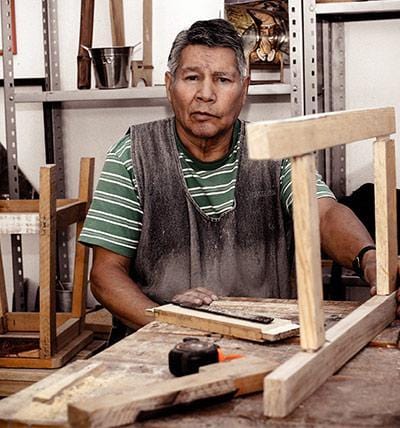In the ever-evolving landscape of architectural design, the choice of materials holds significant sway over not just the aesthetics but also the sustainability and functionality of the built environment.
Amidst this quest for innovation and eco-consciousness, wood stands resolutely as a timeless contender, offering a harmonious blend of tradition and modernity.
Its allure lies not only in its natural beauty but also in its inherent qualities that make it a sustainable, versatile, and structurally sound option for architectural projects.
From the humble beginnings of timber-framed structures to the soaring heights of contemporary skyscrapers, wood has remained a steadfast companion to architects, builders, and inhabitants alike.
In this exploration of the main benefits of using wood in architectural projects, we delve into its multifaceted nature, celebrating its role as a cornerstone of sustainable design and a testament to the enduring appeal of nature's bounty.
Sustainability and Environmental Benefits
One of the primary advantages of using wood in architectural projects is its sustainability. Unlike many other building materials, wood is renewable, with responsible forestry practices ensuring the continuous growth and replenishment of forests. By choosing wood, architects contribute to carbon sequestration, as trees absorb carbon dioxide from the atmosphere during their growth, reducing greenhouse gas emissions. Additionally, wood production requires less energy compared to other materials like steel or concrete, further reducing its environmental impact. Utilizing sustainably sourced wood also supports local economies and promotes biodiversity in forested regions.

Versatility in Design
Wood offers unparalleled versatility in architectural design, allowing for a wide range of aesthetic possibilities. Its natural beauty and warmth create inviting spaces, whether used for structural elements, interior finishes, or exterior cladding. From traditional log cabins to modern skyscrapers, wood can adapt to various architectural styles and preferences.
The ability to customize wood through milling, carving, staining, and finishing techniques adds another layer of design flexibility, enabling architects to achieve their vision while incorporating the unique characteristics of wood into their projects.
Structural Performance and Durability
Despite common misconceptions, wood emerges as a remarkably robust and enduring construction material when correctly engineered and maintained. Engineered wood products like cross-laminated timber (CLT) and glulam beams exhibit exceptional strength and stability, rivaling the performance of steel and concrete. Wood's intrinsic characteristics, including its high strength-to-weight ratio and elasticity, render it suitable for seismic-resistant structures and tall buildings. Moreover, incorporating hardwoods such as blackbutt cladding for exterior finishes elevates aesthetic appeal and adds an additional protective layer against the elements, thereby prolonging the structure's lifespan. Innovations in preservative treatments and protective coatings enhance wood's resilience to decay, pests, and fire, ensuring enduring durability and safety in architectural contexts.

Thermal and Acoustic Properties
Wood possesses excellent thermal and acoustic properties, contributing to energy efficiency and occupant comfort in buildings. Its natural insulating properties help regulate indoor temperatures, reducing heating and cooling costs throughout the year. In colder climates, wooden structures retain heat, creating cozy interiors, while in warmer regions, they provide natural cooling through ventilation and shading.
Additionally, wood absorbs and dampens sound vibrations, minimizing noise transmission between rooms and floors, thus improving acoustic comfort within residential, commercial, and institutional spaces.
Health and Well-being Benefits
Incorporating wood into architectural projects has been linked to numerous health and well-being benefits for occupants. Research suggests that exposure to wood surfaces and elements can reduce stress levels, lower blood pressure, and improve overall mood and cognitive function. The biophilic qualities of wood, such as its natural textures, colors, and patterns, evoke a sense of connection to nature, fostering feelings of tranquility and relaxation. Moreover, wood's hypoallergenic properties make it an ideal choice for individuals with sensitivities or respiratory conditions, as it does not trap dust, mold, or allergens like some synthetic materials.
Economic Considerations and Market Demand
From a financial standpoint, utilizing wood in architectural projects can offer cost savings compared to alternative materials, especially when considering construction time and labor expenses. Wood is lightweight, easy to transport, and quick to assemble, leading to shorter construction schedules and reduced onsite disruption. Additionally, the growing demand for sustainable and eco-friendly buildings has led to increased market opportunities for wood products, driving innovation and investment in the timber industry. Architects and developers can capitalize on this trend by incorporating wood into their designs, attracting environmentally conscious clients and gaining a competitive edge in the market.
In conclusion, the benefits of using wood in architectural projects are vast and multifaceted, encompassing sustainability, versatility, structural performance, thermal and acoustic properties, health benefits, and economic considerations. As society embraces sustainable building practices and seeks to create healthier, more resilient built environments, wood emerges as a natural solution that aligns with these objectives. By harnessing the inherent qualities of wood and leveraging advancements in technology and design, architects can continue to innovate and create timeless, sustainable spaces that enrich the lives of occupants while preserving the planet for future generations.
ABOUT THE AUTHOR
Olivia Poglianich
Content Strategist
Olivia Poglianich is a nomadic brand strategist and copywriter in the wooden crafts and 3D product design space who has worked with brands such as Visa, Disney and Grey Goose. Her writing has taken her all over the world, from a Serbian music festival to a Malaysian art and culture event. Olivia is a graduate of Cornell University and is often writing or reading about travel, hospitality, the start-up ecosystem or career coaching. Her latest interests are at the intersection of web3 and communal living, both on and offline.






